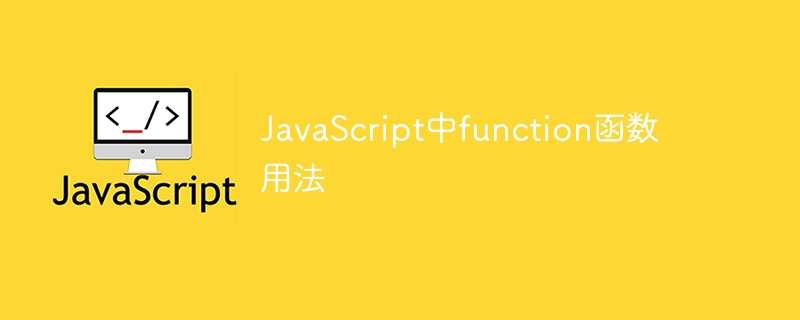

The usage of function functions in JavaScript is the key to writing efficient, reusable and maintainable code. It allows us to encapsulate a block of code and call it when needed. This article will introduce the basic usage of the function function in detail and illustrate it through specific code examples.
In JavaScript, we can declare a function by using the function keyword. The basic syntax of function declaration is as follows:
function functionName(parameters) { // 函数体 // 执行的代码块 return value; // 可选 }
Among them, functionName is the name of the function, parameters are the parameters required by the function, and the function body is an encapsulated code block. The return statement is optional and is used to specify the return value of the function.
Here is an example that demonstrates how to declare a simple function that adds two numbers and returns the result:
function addNumbers(a, b) { return a + b; } console.log(addNumbers(3, 5)); // 输出结果 8
After declaring a function, we can call it by adding parentheses to the function name and passing in the corresponding parameters. For example, in the previous example, we used the addNumbers function to add two numbers:
console.log(addNumbers(3, 5));
In addition to using the function name to declare the function , we can also use anonymous functions. Anonymous functions have no names and are usually used to define blocks of code that do not need to be called repeatedly.
There are two ways to define anonymous functions: function expressions and arrow functions.
Example of function expression:
var addNumbers = function(a, b) { return a + b; } console.log(addNumbers(3, 5)); // 输出结果 8
Example of arrow function:
var addNumbers = (a, b) => a + b; console.log(addNumbers(3, 5)); // 输出结果 8
In JavaScript, functions can Passed as a parameter to another function. This usage is called functional programming and is very common.
Here is an example that demonstrates how to pass a function as a parameter to another function to achieve different functions:
function addNumbers(a, b) { return a + b; } function multiplyNumbers(a, b) { return a * b; } function calculate(operation, a, b) { return operation(a, b); } console.log(calculate(addNumbers, 3, 5)); // 输出结果 8 console.log(calculate(multiplyNumbers, 3, 5)); // 输出结果 15
In the above example, the calculate function accepts an operation (addNumbers or multiplyNumbers) as a parameter, and call the operation function to perform a specific calculation.
The function can return a value through the return statement. If the function does not specify a return statement, it returns undefined.
The following is an example that demonstrates how the function return value is used:
function isEven(num) { if (num % 2 === 0) { return true; } else { return false; } } console.log(isEven(4)); // 输出结果 true console.log(isEven(3)); // 输出结果 false
In the above example, the isEven function checks whether a number is even and returns the corresponding Boolean value.
Summary:
In JavaScript, the function function is one of the very important concepts. It can help us organize code, improve code reusability, and can be called and manipulated in various ways. By deeply understanding the usage of functions, we can write more efficient and maintainable JavaScript code.
Through the code examples provided in this article, I believe readers have a clearer understanding of the usage of function functions in JavaScript. I hope readers can flexibly use this knowledge in practical applications to write better JavaScript programs.
The above is the detailed content of How to use function function in JavaScript. For more information, please follow other related articles on the PHP Chinese website!




